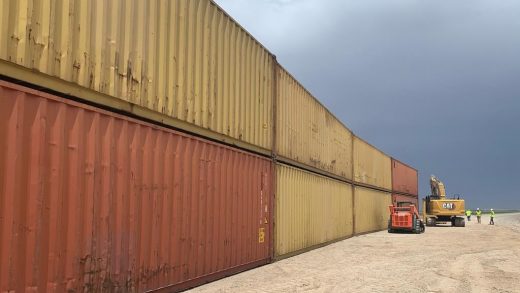Opinion: The evidence says we need fewer cars

RAY Kohanik puts forward in the May 29 edition (It’s time to make better transportation decisions) that our city missed out by not building freeways in the 1970s, and that we should do it now. He supports this idea with arguments that might instinctively “feel” right, but that are entirely refuted by the city’s own data.
I understand why Kohanik, or anyone else for that matter, might hold these views. It has been the predominant narrative around transportation in North America since the Second World War that the continual prioritization of car travel, at the expense of nearly everything else, is the key to economic prosperity and a higher quality of life for all. I used to hold these views. After all, it’s all we’ve ever been told since before many of our parents (or grandparents!) were even born. But despite this continent-wide, decades-long experiment in car-oriented transportation, we now have the benefit of hindsight and data. Loads and loads of data. So rather than make major infrastructure decisions based on what “feels” right, most Winnipeggers would agree that we should make evidenced-based decisions instead.
On the economic side, it’s important to understand that while cars can be extremely useful, a transportation system built around everyone using one every time for every trip is prohibitively expensive. Simply maintaining the 8,300 lane-km of roads that city reports tell us we already own would require an extra $600 million per year. Every year.
Supplied
Artist’s conception of Route 90 expansion at Tuxedo Avenue, Winnipeg
To get it, we’d need to eliminate the entire police department, the entire fire and paramedic department, and the entire Community Services department (the one in charge of pools, libraries and rec centres). Or we could double our property taxes.
And no matter if Justin, Heather or Scott is collecting it, that money is all ultimately coming from the same pockets. Ours.
It’s not just more than the city can afford. It’s more than we can afford.
And that’s the problem. Many of us may say we prefer to drive for every trip, but that’s only because we’re choosing from a menu with no prices. And prices affect preferences. It’s why we don’t all live in 1,000-room mansions and fly a helicopter to work every day. We may prefer it, but when we are confronted with the reality of prices, our choices reflect that reality.
So here’s some reality. Many of us worry about the cost of transit to the taxpayer, but the $38.7 million per year we’re planning to spend to “improve” driving on what amounts to 0.19 per cent of our road network could fund 27 per cent of our entire transit operations. And the numbers are even starker with active transportation: all the bike infrastructure in the city combined has a replacement value of less than $47 million.
Many other cities are figuring that out already. Cities that we are losing young people to every year, like Calgary, Vancouver and Edmonton, are following the data and building more efficient, economical transportation systems. Vancouver, the poster child for transit and active transportation in Canada, doesn’t have any freeways. And they aren’t building any. Calgary is spending $5 billion today to expand its light rail system. Meanwhile, Edmonton, a winter city like ours, is spending $100 million over the next four years to expand their cycling infrastructure. Edmonton’s Mayor Sohi says they’re doing it because “active transportation is the cheapest way to move people around.”
Despite all this, there are still some who say we should be bold and expand Kenaston anyway. After all, Duff Roblin was ridiculed for his grand idea, and look how well that turned out. But in drawing comparisons to the floodway, it would be wise to remember that a cost-benefit analysis done at the time showed an expected positive return of nearly $3 for each dollar spent on the flood-proofing megaproject, whereas the cost-benefit analysis we have for the Kenaston widening expects us to lose nearly 90 cents on the dollar. Maybe Duff Roblin wasn’t a visionary, maybe he was just good at math.
I agree with Ray Kohanik when he says that an efficient transportation system based in reality is needed. But the reality is that while we may wish prioritizing car travel on ever wider roads was financially sustainable, the numbers consistently show it simply is not.
Any way you slice it, the future is in getting more people to walk, bike or take transit on more trips, more times. It’s the only way to pay for all of this.
In the end, Kohanik laments that “the city is broke, broke, broke” but that “that’s another story.” We now know that it’s the same story.
Cities that don’t figure that out soon will go bankrupt, bankrupt, bankrupt.
Michel Durand-Wood lives in Elmwood and has been writing about municipal issues since 2018.


